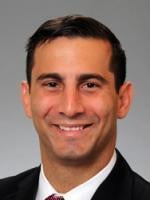Continuing the trend of expanded Medicare reimbursement for remote monitoring, the Centers for Medicare and Medicaid Services (CMS) released the 2022 Physician Fee Schedule final rule on its new Remote Therapeutic Monitoring (RTM) codes, officially titled “Remote Therapeutic Monitoring/Treatment Management.” There are five new RTM codes, all of which go live starting January 1, 2022.
The new RTM codes broaden the use cases for Medicare reimbursement of remote monitoring beyond the existing Remote Patient Monitoring (RPM) codes and represent one of the latest advancements to modernize reimbursement for digital health.
The RTM Frequently Asked Questions below are based on CMS’ policies in the 2022 Final Rule.
-
What are the Remote Therapeutic Monitoring codes?
RTM is a family of five codes created by the CPT Editorial Panel in October 2020 and valued by the RVS Update Committee (RUC) at its January 2021 meeting. The RTM family includes three practice expense (PE)-only codes and two codes that include professional work. The new RTM codes are:
CPT# 98975
Descriptor: Remote therapeutic monitoring (e.g. respiratory system status, musculoskeletal system status, therapy adherence, therapy response); initial set-up and patient education on use of equipment
CPT# 98976
Descriptor: Remote therapeutic monitoring (e.g. respiratory system status, musculoskeletal system status, therapy adherence, therapy response); device(s) supply with scheduled (e.g. daily) recording(s) and/or programmed alert(s) transmission to monitor respiratory system, each 30 days
CPT# 98977
Descriptor: Remote therapeutic monitoring (e.g. respiratory system status, musculoskeletal system status, therapy adherence, therapy response); device(s) supply with scheduled (e.g. daily) recording(s) and/or programmed alert(s) transmission to monitor musculoskeletal system, each 30 days
CPT# 98980
Descriptor: Remote therapeutic monitoring treatment, physician/other qualified health care professional time in a calendar month requiring at least one interactive communication with the patient/caregiver during the calendar month; first 20 minutes
CPT#98981
Descriptor: Remote therapeutic monitoring treatment, physician/other qualified health care professional time in a calendar month requiring at least one interactive communication with the patient/caregiver during the calendar month; each additional 20 minutes
The structure and nature of RTM services resemble RPM services. (Read more about RPM rules here and here.) While there are similarities between the two sets of code descriptors, there are notable differences.
-
Can RTM be used for non-physiological data?
Yes. RTM is designed for the management of patients using medical devices that collect non-physiological data. Data around indicators such as therapy/medication adherence, therapy/medication response, and pain level can be collected and billed under the new RTM codes. Under these codes, CMS recognizes “therapeutic” data—not just “physiologic” data—as an important category of patient information that can be assessed remotely. This differs from RPM codes, which can only be used in conjunction with tracking physiologic data (e.g., heart rate, blood pressure, and blood sugar levels).
Compared to RPM, the RTM codes offer the promise of broader use cases and applications inpatient care. The list of RTM health conditions identified in the code descriptors is meant to be illustrative and not exhaustive (hence the use of “e.g.”). In the proposed PFS rule, CMS added the word “(medication)”—“therapy (medication) adherence, and therapy (medication) response” —but that word is not contained in the CPT code descriptors. It is unclear what American Medical Association (AMA) or RUC materials CMS relied upon when inserting the word ‘medication’ in its PFS commentary.
Here’s a hypothetical example of how RTM might potentially be used:
An asthmatic patient is prescribed a rescue inhaler equipped with an FDA-approved medical device that monitors when the patient uses the inhaler, how many times during the day the patient uses the inhaler, how many puffs/doses the patient uses each time, and the pollen count and environmental factors that exist in the patient’s location at that time. This is non-physiologic data. The data is then used by the treating practitioner to assess the patient’s therapeutic response and adherence to the asthma treatment plan. This can enable the practitioner to better determine how well the patient is responding to the particular medication, what social or environmental factors affect the patient’s respiratory system status, and what changes could be made to improve the patient’s health.
-
Is RTM limited to respiratory and musculoskeletal conditions?
Yes, the clinical use cases eligible for device supply reimbursement under RTM are limited. The two RTM device supply codes (98976, 98977) are similar to the RPM device supply code (99454), but not identical. CPT code 99454 does not restrict the clinical or biological systems being monitored, although the data must be physiological. In contrast, the two RTM device supply code descriptors themselves indicate far more limited clinical use cases. Namely, 98976 is only for transmissions to monitor respiratory system, whereas 98977 is only for transmissions to monitor musculoskeletal system. The current RTM device supply codes do not target other systems (e.g., neurological, vascular, endocrine, digestive, etc.). In the final rule, CMS acknowledged it received comments that a general device code should be created that would be system agnostic and not restrict RTM reimbursement to monitoring patients’ musculoskeletal and respiratory systems. But CMS did not include such a general device code in the final rule.
Stakeholders are optimistic CMS will include an expanded list of conditions in the future. For example, in early November 2021, the AMA announced revisions to the CPT codes for RTM to clarify coding of Cognitive Behavioral Therapy monitoring services.
-
How are RTM codes classified?
The RTM codes are classified as general medicine codes and not Evaluation and Management (E/M) codes. In contrast, RPM is classified as an E/M service.
-
What practitioners can order and deliver RTM?
Physicians and eligible qualified healthcare professionals are permitted to bill RTM as general medicine services. A physician or other qualified healthcare professional is defined in the CPT Codebook as “an individual who is qualified by education, training, licensure/regulation (when applicable) and facility privileging (when applicable) who performs a professional service within his/her scope of practice and independently reports that professional service.” Accordingly, RTM codes could be available for physical therapists (PT), occupational therapists (OT), speech-language pathologists, physician assistants, nurse practitioners, and clinical social workers. In the final rule, CMS stated the primary billers of RTM codes are projected to be physiatrists, nurse practitioners, and physical therapists. The new RTM codes, classified as general medicine codes, should open up opportunities for therapists, psychologists, and other eligible practitioners who cannot currently bill for RPM (as RPM is an E/M code).
-
Is incident to billing under general supervision allowed for RTM?
No. Because the two RTM treatment management codes (CPT codes 98980 and 98981) are not E/M codes, they cannot be designated as care management services. This means a physician could not order and bill for RTM services while having remote-based non-physician practitioners perform the work under general supervision.
RPM allows billing practitioners to leverage clinical staff via incident to billing under general supervision. However, as a general medicine code, RTM does not allow clinical staff under general supervision to perform RTM services for the billing provider. In the final rule, CMS stated that where a practitioner’s Medicare benefit does not include services furnished incident to their professional services, the RTM services must be furnished directly by the billing practitioner or, in the case of a PT or OT, by a therapy assistant under the PT’s or OT’s supervision. Also, unlike the RPM CPT code descriptors, nothing in the description of the RTM codes mentions time spent by clinical staff.
-
How many minutes of service are required for RTM?
CPT code 98980 requires a minimum of 20 minutes of time in a month, dedicated to remote therapeutic monitoring treatment management of the patient. This time must also include at least one interactive communication with the patient/caregiver during the month (e.g., via phone or video).
CPT code 98981 has the same requirements as CPT codes 98980, except is it used for additional 20 minutes per month, as an add-on code.
-
How often can the RTM codes be billed?
Code 98975 may be billed once per episode of care. An episode of care begins when the remote therapeutic monitoring serve initiates and ends with the attainment of targeted treatment goals.
Codes 98976 and 98977 may be billed once per 30 days.
Code 98980 may be billed once per calendar month regardless of the number of therapeutic monitoring modalities performed in a given calendar month. Code 98981 may be billed once per calendar month for each additional 20 minutes completed within such month.
-
Are RTM codes subject to the de minimis standard?
The device codes are not subject to it, but the education code is. In the final rule, CMS designated the five RTM codes as “sometimes therapy codes.” As sometimes therapy codes, the RTM services can be billed outside a therapy plan of care when provided by a physician and certain NPPs, but only when appropriate.
CMS stated the two RTM device codes, CPT codes 98976 and 98977, are not subject to the de minimis standard that establishes the threshold for the statutorily required payment adjustment that applies to therapy services provided in whole or in part by therapy assistants. However, the initial set-up and patient education services (CPT code 98975) are subject to the de minimis policy that dictates therapy assistant payments. CMS provides a billing example in the final rule to illustrate how the de minimis standard would be applied for the RTM treatment management services that describe the interactive communications between the therapist and/or therapy assistant and the patient/caregiver.
-
Does RTM require the use of a medical device, or can it be just a wellness wearable?
RTM requires the use of a medical device as defined under the federal Food, Drug, and Cosmetics Act (i.e., not merely a wellness device).
-
How many days of data must the device monitor?
CPT codes 98975, 98976, and 98977 require the RTM device to monitor at least 16 days of data per each 30-day period, in total.
-
Can RTM data be self-reported by the patient?
Yes. In the final rule, CMS stated that self-reported/entered data may be part of the non-physiologic data for purposes of RTM codes. RTM data can be self-reported by the patient, as well as digitally uploaded via the device. While RTM codes still require the device used meet the FDA’s definition of a medical device, self-reported RTM data via a smartphone app or online platform classified as Software as a Medical Device (SaMD) may qualify for reimbursement, according to CMS. This differs from RPM codes, which require the device to digitally (automatically) record and upload patient physiologic data (i.e., data cannot be patient self-recorded, self-reported, or entered manually into the device).
Conclusion
Entrepreneurs and providers offering remote monitoring technologies and services should take steps now to understand these new billing opportunities under Medicare. Remote monitoring will continue its growth as an area of significant upside potential over the coming years. Hospitals and providers using RPM, RTM, and other non-face-to-face technologies to develop patient population health and care coordination services should take a serious look at these new codes, and keep abreast of developments that can drive recurring revenue and improve the patient care experience.





 />i
/>i

